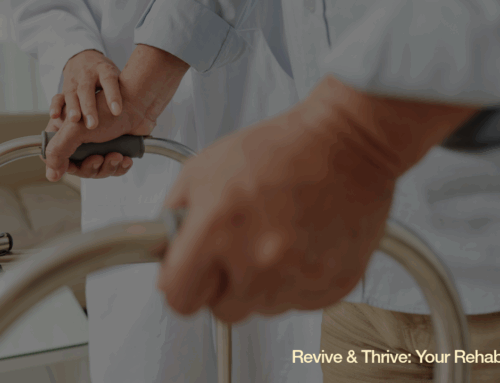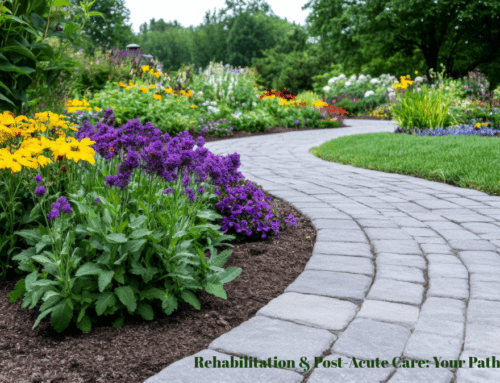Imagine this: You’ve just emerged from the haze of surgery, your body a roadmap of aches and unfamiliar limitations. The hospital room feels like a temporary cocoon, but now what? The road ahead isn’t a straight highway—it’s a winding path of rediscovery, where every step rebuilds not just muscle, but momentum. Welcome to the world of rehabilitation and post-acute care, where setbacks turn into stories of unyielding resilience. In this space, recovery isn’t merely about healing wounds; it’s about reigniting the spark of independence, joy, and purpose that defines you.
As we move through an era where health challenges like joint replacements, strokes, and chronic conditions grow more common—especially with aging populations on the rise—knowing rehabilitation and post-acute care matters more than ever. These aren’t just medical pit stops; they’re active bridges from hospital beds to vibrant, self-sufficient lives at home. In this close look, we’ll cover the basics of these services, the therapies that drive change, the holistic heart that beats beneath it all, and practical tips to guide your path. Whether you’re planning for yourself, a loved one, or simply curious, let’s reimagine rehab as the bold adventure it truly is.
Decoding the Essentials: What Is Rehabilitation & Post-Acute Care?
At its core, post-acute care picks up right where the hospital leaves off. It’s the specialized sequence designed for patients who no longer need intensive acute care but aren’t quite ready to dive back into daily life unassisted. Think of it as a supportive launchpad: short-term stays (often just weeks) in a licensed healthcare residence staffed around the clock by registered nurses, licensed practical nurses, and certified nursing assistants. These facilities aren’t your traditional nursing homes; they’re certified by the Centers for Medicare & Medicaid Services, adhering to rigorous standards that ensure safety, efficacy, and compassion.
Rehabilitation, the beating heart of this phase, focuses on restoring function and building independence. It’s tailored for recovery from surgeries (like hip or knee replacements), injuries (such as fractures from slips), or illnesses (strokes, heart attacks, or COPD exacerbations). Services extend beyond basic nursing to include wound management, IV medications, diabetic monitoring, and catheter care— all delivered with an eye toward getting you home stronger and safer.
What sets this apart? Coverage. Medicare often foots much of the bill for eligible stays, with private insurance and other plans chipping in too. It’s not about long-term residency; it’s about targeted, efficient restoration. In Northeast Connecticut, for instance, facilities earning top national rankings and five-star Medicare ratings exemplify this gold standard, blending cutting-edge care with a homelike warmth that makes healing feel less like treatment and more like a gentle return to yourself.
The Powerhouse Therapies: Tools for Your Change
No two recovery paths are alike, which is why individualized care plans form the cornerstone of solid rehab. From day one, a multidisciplinary team assesses your needs—mobility, daily tasks, cognitive hurdles—and crafts a roadmap that’s as unique as your fingerprint. Enter the therapies: the dynamic duo (or trio) of physical, occupational, and speech rehab, often powered by expert partners like Fusion Rehab Services.
Physical Therapy: Rebuilding the Foundation
Picture parallel bars, treadmills, and targeted exercises that coax your body back to balance. Physical therapists focus on gait training, endurance building, and muscle strengthening, whether you’re rebounding from a broken bone or cardiac event. For COPD patients, pulmonary rehab layers in breathing strategies and oxygen management to ease that relentless shortness of breath. It’s not grueling gym sessions; it’s purposeful movement that reignites your confidence to walk unaided, climb stairs, or chase grandkids across the yard.
Occupational Therapy: Mastering the Mundane with Mastery
Ever taken for granted the simple act of buttoning a shirt or prepping a meal? Occupational therapists turn these “mundane” tasks into milestones. In dedicated therapy suites mimicking real-world settings—a kitchenette, a mock bathroom—they guide you through fine motor skill drills, adaptive techniques, and energy-conserving hacks. Post-stroke? They’ll rebuild hand-eye coordination. Joint replacement? They’ll simulate safe transfers from bed to chair. The goal? Seamless reintegration into your routines, so home feels like an ally, not an obstacle.
Speech Therapy: Finding Your Voice Again
For those dealing with aphasia, swallowing difficulties, or vocal strain after illness, speech therapists are the unsung heroes. Using apps, augmented communication devices, and vocal exercises, they tackle everything from clear articulation to safe eating. Swallow training prevents aspiration risks, while cognitive-linguistic drills sharpen memory and expression. It’s profoundly personal: reclaiming not just words, but the stories they carry.
Layered atop these are specialized supports like bariatric care (with reinforced equipment for safe mobility), complex wound dressings (employing bioengineered tissues for faster healing), and telemetry-monitored cardiac rehab. Every session is adaptive, evolving with your progress, and backed by 24/7 vital sign monitoring to catch hiccups before they sideline you.
The Holistic Heart: Healing Body, Mind, and Soul
Rehab isn’t a checklist—it’s a symphony where clinical precision harmonizes with human connection. Leading facilities embrace a holistic ethos, rooted in dignity and community, often drawing from Franciscan traditions that prioritize the whole person. This means addressing emotional ripples alongside physical ones: grief counseling for loss of mobility, spiritual nourishment through chapel services and pastoral visits, and a smoke-free, homelike environment that whispers “you’re home” with spacious rooms, outdoor paths for fresh-air strolls, and therapy gyms buzzing with possibility.
Family isn’t sidelined—they’re woven in. Care conferences demystify progress, therapy observations build your cheer squad, and education workshops equip you for home adaptations like grab bars or meal prep tweaks. Volunteers add sparkle with music sessions, crafts, and seasonal picnics, while respite options give caregivers a breather. It’s this tapestry—compassionate aides offering encouraging words over favorite meals, round-the-clock empathy—that turns recovery into renewal. In a world of sterile efficiency, this approach stands out. Patients don’t just leave with stronger bodies; they depart with fortified spirits, ready to thrive in their communities.
Spotlight on Excellence: What Makes a Difference?
When choosing a rehab partner, look beyond beds and ratings (though five stars from Medicare’s Nursing Home Compare is a stellar start). Seek the seamless continuum: partnerships with local hospitals for smooth handoffs, innovative tech like advanced wound care tools, and a track record of outcomes that prioritize independence. Non-profit leaders in regions like Northeast Connecticut often shine here, offering advanced care without the corporate gloss—think tailored programs for orthopedic triumphs or stroke survivors, all under one roof.
The proof? Patients walking out—literally—after hip surgeries, families reuniting around dinner tables, and caregivers reclaiming their roles with renewed hope. It’s the quiet victories: a COPD patient breathing easier on family hikes, a post-op warrior gardening again. These aren’t anomalies; they’re the norm in environments where care plans flex like a well-tuned instrument.
Your Toolkit: 7 Tips for a Triumphant Recovery
Preparation starts with action. Here’s your practical playbook:
Advocate Early: Discuss post-acute options with your hospital team pre-discharge. Ask about five-star facilities with specialized therapies.
Pack with Purpose: Include comfy clothes for therapy, favorite photos for morale, and a journal for reflections.
Engage Your Circle: Loop in family for visits and updates—shared wins amplify joy.
Mind the Nutrition: Fuel recovery with balanced meals; therapists can guide adaptive eating.
Track Tiny Wins: Celebrate buttoning that shirt or taking extra steps—progress is your North Star.
Lean on Support: Use emotional resources like grief groups; vulnerability is strength.
Plan the Pivot Home: Work with discharge planners on safety mods—ramps, meal services—to sustain gains.
These steps aren’t just tips; they’re lifelines, turning potential pitfalls into paved paths.
Ignite Your Comeback: The Next Chapter Awaits
From the first tentative step to the stride of rediscovered freedom, rehabilitation and post-acute care reframe fragility as fuel. It’s a space where science meets soul, where skilled hands and heartfelt support collaborate to unlock your untapped potential.
If life’s thrown you a curveball, remember: setbacks are setups for spectacular comebacks. Reach out to us today—your radiant recovery is ready to unfold. What’s one step you’ll take toward reclaiming your strength? Share in the comments below; together, we’re rewriting the narrative of resilience.






